Pan-seared Pork Belly
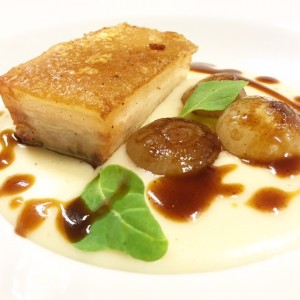 …with Potato Velloute and Glazed Cipollini Onions
…with Potato Velloute and Glazed Cipollini Onions
Courtesy of Chef Sandra Rosy Lotti (Toscana Saporita – A Tuscan Cookery School)
Serves 4
INGREDIENTS
- 1 pound (450 g) pork belly with rind
- salt and freshly ground black pepper to taste
- 1 tablespoon (15 ml) extra virgin olive oil
- 1 teaspoon (5 ml) fresh rosemary leaves
- 1 teaspoon (5 ml) fresh sage, roughly chopped
DIRECTIONS
- Fill and preheat the SousVide Supreme water oven to 147F/64C.
- In a bowl, mix together all seasoning ingredients and rub onto the pork belly until evenly distributed.
- Put the pork belly into a cooking pouch and vacuum seal.
- Submerge the pouch in the water oven to cook for at least 18 hours and up to 24 hours is even better!
- Remove from pouch and portion the pork belly into four 1-inch (2.5-cm) thick slices.
- On the stovetop, brush a heavy cast iron skillet lightly with extra virgin olive oil and heat on high. Sear the belly, rind side down, until golden and crunchy.
Potato Velloute
(Note: this accompaniment is not prepared sous vide.)
INGREDIENTS
- 3 tablespoons (45 ml) extra virgin olive oil
- 1 medium white onion, peeled and finely julienned
- 3 medium potatoes, peeled and chopped
- 1/2 cup (120 ml) dry white wine
- 2 cups (480 ml) beef broth
- salt and pepper to taste
DIRECTIONS
- Heat the oil in a medium heavy gauge pot on low heat; add the onion and cook until soft, stirring for about 6 to 8 minutes.
- Add the potatoes and stir to coat well. Cook for 5 minutes.
- Add the white wine and let it evaporate.
- Add the broth and keep cooking until the potatoes are fork tender.
- Season with salt and pepper and then puree with immersion blender (or transfer to a jar blender or food processor and puree).
Balsamic Pan-seared Cipollini Onions
(Note: This accompaniment is not prepared sous vide.)
INGREDIENTS
- 12 cipollini onions, peeled
- 4 tablespoons (60 ml) extra virgin olive oil
- salt and pepper to taste
- 1/2 cup (120 ml) white wine vinegar
- 1 tablespoon (15 ml) sugar
- 2 1/2 cups (600 ml) wate
- To finish the onions
- 1 tablespoon (15 ml) extra virgin olive oil
- 1 tablespoon (15 ml) balsamic vinegar
DIRECTIONS
- Heat the oil and saute the onions until lightly golden, approx 5 minutes, stirring frequently.
- Season to taste with salt and pepper; add vinegar and sugar and cook for 5 minutes or until vinegar has evaporated.
- Pour in water and cover; lower the heat and let cook until fork tender.
- Heat a heavy skillet on medium high and pan sear the onions with the olive oil and balsamic until lightly brown and glossy.

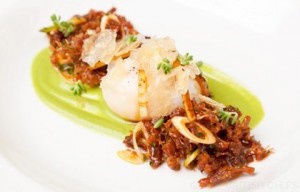
 Courtesy of Alex Chow,
Courtesy of Alex Chow,  …with pickled rhubarb, red currants, pine nuts, duck crackling and duck dressing
…with pickled rhubarb, red currants, pine nuts, duck crackling and duck dressing …with beetroot meringue, toasted walnuts, and maple dressing
…with beetroot meringue, toasted walnuts, and maple dressing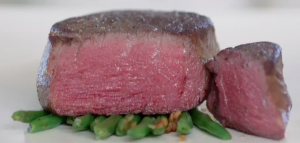

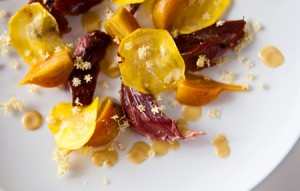
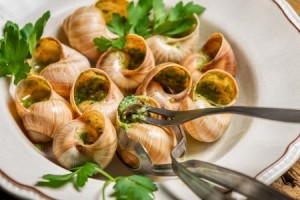 Serves 4
Serves 4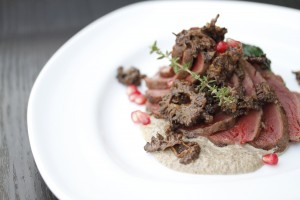 …and Morel Pomegranate Sauce
…and Morel Pomegranate Sauce
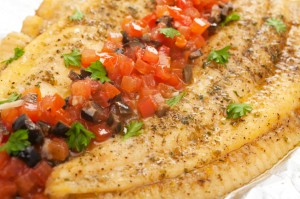
 Easy Returns & Exchanges
Easy Returns & Exchanges Shipping Rates & Info
Shipping Rates & Info Satisfaction Guarantee
Satisfaction Guarantee Contact Us
Contact Us Email your questions to
Email your questions to 
